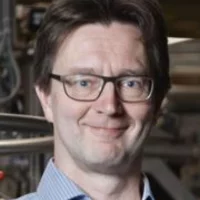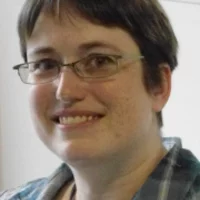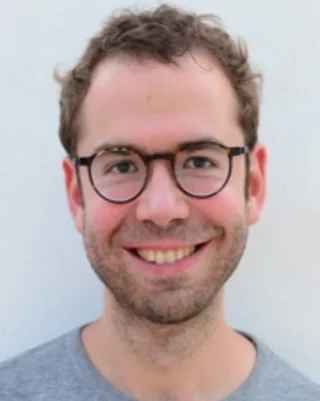Biography
Roman Mankowsky received his Physics Diploma in 2011 from the Humboldt University in Berlin, Germany, working on new absorber materials for thin film heterojunction solar cells in collaboration with the Helmholtz Zentrum Berlin. He then moved to Hamburg to study the ultrafast control of strongly correlated materials at the Max Planck Insititute for the Structure and Dynamics of Matter and received his PhD for his thesis on nonlinear phononics from the University of Hamburg in 2016, supervised by Prof. Andrea Cavalleri. For his thesis, he received the Reimar Lüst award and used his fellowship to join the Bernina group within the SwissFEL project in 2017, where he is working as beamline scientist since 2018.
Institutional Responsibilities
Roman is working as beamline scientist the Bernina Endstation at the SwissFEL Free Electron Laser. He is deputy head of the Bernina group and responsible for beamline access and development as well as user support.
Scientific Research
Romans research is focused on the ultrafast control of functional properties of materials, for example high temperature superconductivity, giant magnetoresistance and insulator-metal transitions. By exciting a material with laser pulses, energy can be coupled selectively into electronic, magnetic and structural degrees of freedom based on the wavelength, polarization and temporal shape of the laser pulse, and material properties can be controlled. In his current research projects, Roman applies these techniques to the ultrafast control of the ferroelectric polarization, which promises applications in data storage and control of functional heterostructures, and the investigation of complex magnetoelastic modes in pyrochlore materials with the goal to develop new techniques for the selective control. These projects are accompanied by technological developments in sample environments to extend the capabilities of the Bernina Endstation at SwissFEL.
Publication Record
For an extensive overview we kindly refer you to our publication repository DORA.
Web of Science ID AAK-8181-2020
- https://www.researcherid.com/rid/AAK-8181-2020/
- Registered Publications: 23 (04/2020)
- Total Citations: 634 (04/2020)
Selected Publications
Towards X-ray transient grating spectroscopy, C. Svetina, R. Mankowsky, G. Knopp, F. Koch, G. Seniutinas, B. Rösner, A. Kubec, M. Lebugle, I. Mochi, M. Beck, C. Cirelli, J. Krempasky, C. Pradervand, J. Rouxel, G. Mancini, S. Zerdane, B. Pedrini, V. Esposito, G. Ingold, U. Wagner, U. Flechsig, R. Follath, M. Chergui, C. Milne, H. Lemke, C. David, P. Beaud (2019), Optics Letters 44, 574. https://doi.org/10.1364/OL.44.000574
The extension of transient grating spectroscopy to the x-ray regime will create numerous opportunities, ranging from the study of thermal transport in the ballistic regime to charge, spin, and energy transfer processes with atomic spatial and femtosecond temporal resolution. Studies involving complicated split-and-delay lines have not yet been successful in achieving this goal. Here we propose a novel, simple method based on the Talbot effect for converging beams, which can easily be implemented at current x-ray free electron lasers. We validate our proposal by analyzing printed interference patterns on polymethyl methacrylate and gold samples using ~3keV X-ray pulses.
Probing the Interatomic Potential of Solids with Strong-Field Nonlinear Phononics, A. von Hoegen, R. Mankowsky, M. Fechner, M. Först, A. Cavalleri, Nature 555, 79–82 (2018). https://doi.org/10.1038/nature25484
Nonlinear optical techniques at visible frequencies have long been applied to condensed matter spectroscopy. However, because many important excitations of solids are found at low energies, much can be gained from the extension of nonlinear optics to mid-infrared and terahertz frequencies. For example, the nonlinear excitation of lattice vibrations has enabled the dynamic control of material functions. So far it has only been possible to exploit second-order phonon nonlinearities at terahertz field strengths near one million volts per centimetre. Here we achieve an order-of-magnitude increase in field strength and explore higher-order phonon nonlinearities. We excite up to five harmonics of the A1 (transverse optical) phonon mode in the ferroelectric material lithium niobate. By using ultrashort mid-infrared laser pulses to drive the atoms far from their equilibrium positions, and measuring the large-amplitude atomic trajectories, we can sample the interatomic potential of lithium niobate, providing a benchmark for ab initio calculations for the material. Tomography of the energy surface by high-order nonlinear phononics could benefit many aspects of materials research, including the study of classical and quantum phase transitions.
Ultrafast Reversal of the Ferroelectric Polarization, R. Mankowsky, A. von Hoegen, M. Först, and A. Cavalleri, Phys. Rev. Lett. 118, 197601 (2017). https://doi.org/10.1103/PhysRevLett.118.197601
We report on the demonstration of ultrafast optical reversal of the ferroelectric polarization in LiNbO3. Rather than driving the ferroelectric mode directly, we couple to it indirectly by resonant excitation of an auxiliary high-frequency phonon mode with femtosecond midinfrared pulses. Because of strong anharmonic coupling between these modes, the atoms are directionally displaced along the ferroelectric mode and the polarization is transiently reversed, as revealed by time-resolved, phase-sensitive, second-harmonic generation. This reversal can be induced in both directions, a key prerequisite for practical applications.
Non-equilibrium control of complex solids by nonlinear phononics, R. Mankowsky, M. Först, A. Cavalleri, Rep. Prog. Phys. 79, 064503 (2016). doi:10.1088/0034-4885/79/6/064503
We review some recent advances in the use of optical fields at terahertz frequencies to drive the lattice of complex materials. We will focus on the control of low energy collective properties of solids, which emerge on average when a high frequency vibration is driven and a new crystal structure induced. We first discuss the fundamentals of these lattice rearrangements, based on how anharmonic mode coupling transforms an oscillatory motion into a quasi-static deformation of the crystal structure. We then discuss experiments, in which selectively changing a bond angle turns an insulator into a metal, accompanied by changes in charge, orbital and magnetic order. We then address the case of light induced non-equilibrium superconductivity, a mysterious phenomenon observed in some cuprates and molecular materials when certain lattice vibrations are driven. Finally, we show that the dynamics of electronic and magnetic phase transitions in complex-oxide heterostructures follow distinctly new physical pathways in case of the resonant excitation of a substrate vibrational mode.
Nonlinear lattice dynamics as a basis for enhanced superconductivity in YBa2Cu3O6.5, R. Mankowsky, A. Subedi, M. Först, S.O. Mariager, M. Chollet, H. T. Lemke, J. S. Robinson, J. M. Glownia, M. P. Minitti, A. Frano, M. Fechner, N. A. Spaldin, T. Loew, B. Keimer, A. Georges, A. Cavalleri, Nature 516 71 (2014). https://doi.org/10.1038/nature13875
Terahertz-frequency optical pulses can resonantly drive selected vibrational modes in solids and deform their crystal structures. In complex oxides, this method has been used to melt electronic order, drive insulator-to-metal transitions7 and induce superconductivity8. Strikingly, coherent interlayer transport strongly reminiscent of superconductivity can be transiently induced up to room temperature (300 kelvin) in YBa2Cu3O6+x. Here we report the crystal structure of this exotic non-equilibrium state, determined by femtosecond X-ray diffraction and ab initio density functional theory calculations. We find that nonlinear lattice excitation in normal-state YBa2Cu3O6+x at above the transition temperature of 52 kelvin causes a simultaneous increase and decrease in the Cu–O2 intra-bilayer and, respectively, inter-bilayer distances, accompanied by anisotropic changes in the in-plane O–Cu–O bond buckling. Density functional theory calculations indicate that these motions cause drastic changes in the electronic structure. Among these, the enhancement in the character of the in-plane electronic structure is likely to favour superconductivity.
Short CV
Research positions
2018 – present: Beamline Scientist at the SwissFEL Bernina endstation, Paul Scherrer Institute, Villigen, Switzerland
2017 - 2018: Postdoc Fellowship from Max Planck Society Reimar Lüst price, work at the SwissFEL Bernina Endstation, Paul Scherrer Institute, Villigen, Switzerland
2016 – 2018: Postdoc at the Max Planck Institute for the Structure and Dynamics of Matter, Hamburg, Germany
Education
2011 – 2016: PhD – summa cum laude, Nonlinear phononics and structural control in strongly correlated materials (2016). https://ediss.sub.uni-hamburg.de/volltexte/2016/8211/, Max Planck Institute for the Structure and Dynamics of Matter, Hamburg, Germany and University of Hamburg, Hamburg, Germany
Supervisors: Prof. Andrea Cavalleri, Prof. Alexander Lichtenstein
2004-2011: Diploma in Physics – with distinction, Preparation and characterization of modern thin film solar cells based on tungsten disulfide, grown by reactive magnetron sputtering and rapid crystallization (2011). Grade 1.0, Humboldt-Universität, Berlin, Germany and Helmholtz-Zentrum für Materialien und Energie, Berlin, Germany
Supervisors: Prof. Recardo Manzke, Dr. Klaus Ellmer
Memberships
Professional societies
- German Physical Society (DPG)
- Swiss Physical Society (SPS)
Books
N/A


